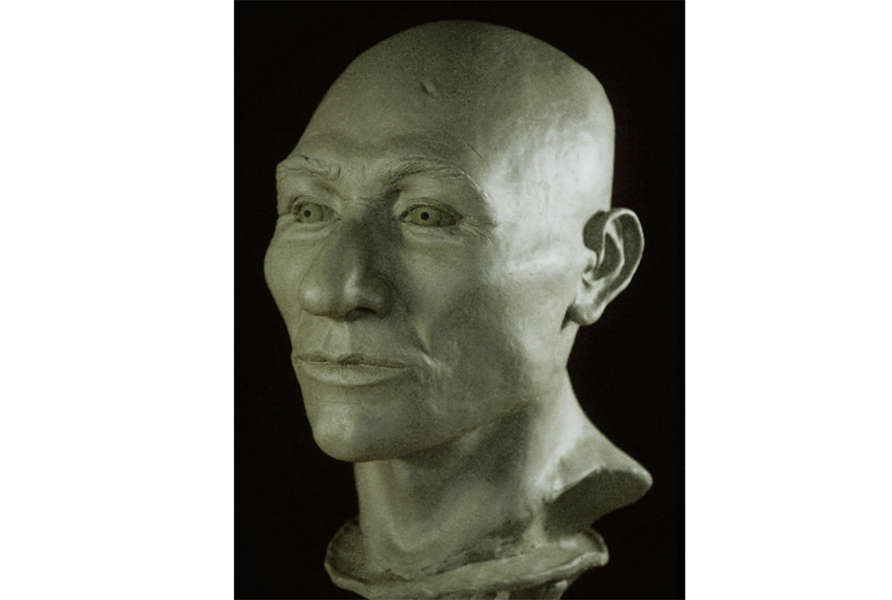Burial of 9,000-year-old Kennewick Man lays to rest a 20-year-old debate
After a 20-year legal battle between scientists and Native American groups, the 9,000-year-old remains of the Kennewick Man have finally been laid to rest.
The first part of the ancient man's remains, which turned out to be one of the oldest and most complete ever found in North America, was discovered in 1996 on the banks of the Columbia River in Kennewick, Wash. The remains were excavated for study by scientists, who thought that the Kennewick Man, as he came to be called, might be a descendant of people who migrated from Asia into North America even before the populations that were the ancestors of modern Native Americans came to the continent.
Many local Native American tribes disagreed, claiming that the remains belonged to one of their ancestors. This claim launched a court battle in an attempt to get the Kennewick Man, whom the tribes refer to as the Ancient One, reburied according to their religious customs, as would be required by the Native American Graves Protection and Repatriation Act. Genetic tests in the early 2000s, however, led scientists to conclude that Kennewick Man was more closely related to people from Japan and Polynesia, causing the local tribes to lose federal cases in 2002 and 2004.
But DNA technology has improved a great deal since then, and in 2015, a new genetic analysis found that the scientists' initial conclusions about Kennewick Man's ancestry had been incorrect. Researchers then tried to determine which Native American groups he was most similar to, as the Christian Science Monitor's Pete Spotts reported at the time:
Of the small number of samples available, Kennewick Man was closer to native American groups from the Northwest. Among those, the closest link was with the Confederated Tribes of the Colville Reservation, one of five tribal groups in the region involved in efforts to repatriate the remains.
The researchers offer two scenarios that could have led to the genetic differences that exist between Kennewick Man and the Colville tribes. They could have split from a common group about 700 years before Kennewick Man lived. Or the Colville group could be direct descendants, with an additional influx of other genes working their way into the genomes of the Colville group during the past 8,500 years.
The team's results didn't allow them to pick an out-and-out winner among these two scenarios, says Rasmus Nielsen, a geneticist from the University of California at Berkeley and another member of the team. But, he adds, there is enough evidence to suggest that the second scenario may be the right one.
"We always knew the Ancient One to be Indian," Aaron Ashley, a board member of the Umatilla tribe, told The Los Angeles Times. "We have oral stories that tell of our history on this land, and we knew, at the moment of his discovery, that he was our relation."
In light of the new DNA analysis, Sen. Patty Murray (D) of Washington state introduced a bill in 2015 to repatriate the remains. The bill was signed into law by then-President Barack Obama.
On Saturday, more than 200 members of the Umatilla, Yakama Nation, Nez Perce Tribe, Confederated Tribes of the Colville Reservation, and the Wanapum Band of Indians, met at a secret burial location on the Columbia Plateau, according to The Seattle Times. The Ancient One was laid to rest with songs "very close" to what would have been sung during Kennewick Man's time, Chuck Sams, the communications director for the Confederated Tribes of the Umatilla Indian Reservation, told the Times.
"A wrong had finally been righted," Mr. Sams told the Seattle Times. He also pointed out that over 100,000 sets of Native American remains still belong to collections across the United States.
In the 20 years since the skeleton was discovered, a great deal has been learned about the Kennewick Man. Researchers determined that he weighed 163 pounds at the time of his death, and stood approximately 5 feet, 7 inches tall. He was right-handed, and appeared to have subsisted on a diet of fish or marine mammals, though he hunted various land animals as well. Before his death, at about age 40, there is evidence that Kennewick Man survived two major injuries, including a projectile point embedded in his hip bone.
And for now, it seems, his story has come to a close.
"The return of our ancestor to Mother Earth is a blessing for all Yakama people," reads a statement from the Yakama Nation. "The Ancient One (also known as the 'Kennewick Man') may now finally find peace, and we, his relatives, will equally feel content knowing that this work has been completed on his behalf."






